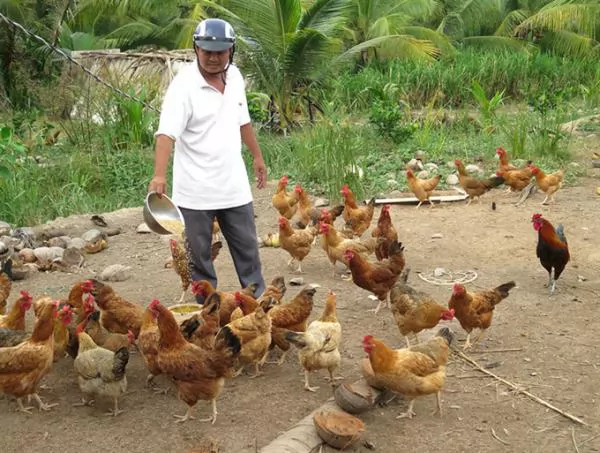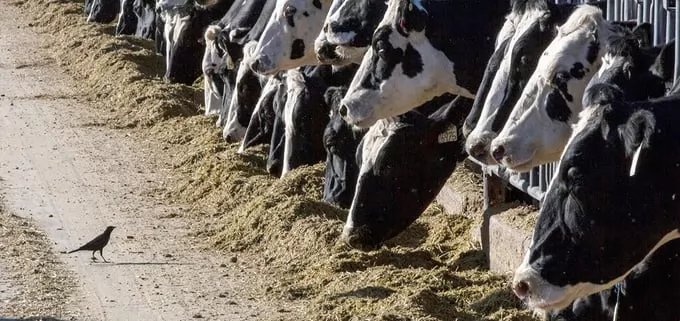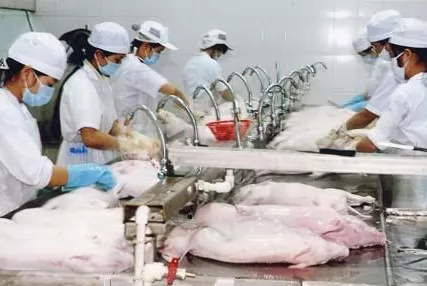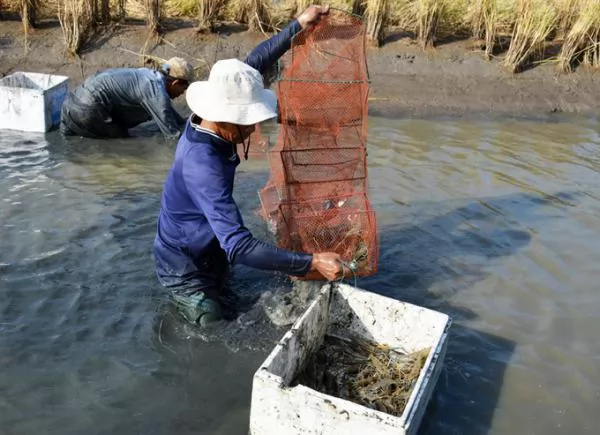Province reduces poverty by teaching households new farming models

Breeding gà nòi lai tàu chickens is one of the effective farming models Bến Tre Province trains poor households in to escape poverty. - Photo baodongkhoi.vn
Viet Nam News / BẾN TRE – Authorities in the Mekong Delta province of Bến Tre have taught poor households effective farming models to help them escape poverty.
The models include breeding all male giant river prawns in rice fields, raising hybrid chickens, intercropping green skin and pink flesh grapefruits in coconut orchards, and raising oxen, cows and goats.
Many households in Thạnh Phú District’s Mỹ An Commune are raising male giant river prawns in rice fields with instruction from the Agriculture Extension Centre.
Lê Hoàng Dũng said he keeps juvenile prawns in a pond for three months before releasing them into the rice field.
A crop lasts around seven months since the creatures cannot survive high salt content in the water, he said. The commune has freshwater for six months in a year and saline water for the other six.
Poor households breeding the prawns should co-operate with each other and together buy machines for grinding food for them, according to the centre.
The food is made by grinding fish and bran.
Nguyễn Văn Trường, chairman of the Mỹ An Commune People’s Committee, said a farmer can earn VNĐ60 -70 million (US$2,580 – 3,000) per hectare by raising the prawns.
This year 81 households in the commune managed to escape poverty, 15 by breeding male giant river prawns, he said.
The centre has bred gà nòi lai tàu chickens, a cross between gà nòi and gà tàu, two popular varieties in the country.
The survival rate of this hybrid bird is 95 per cent, the centre said.
Ngô Quang Tiệp, who breeds gà nòi lai tàu chickens in Mỏ Cày Nam District’s Tân Trung Commnue, said poor people who have a few hundred meters of farmlands could breed the chicken.
The cost of making pens for them is low, he said.
They lay more eggs than gà nòi chicken -- 180-200 a year to 120.
The chicken, which can be raised in gardens, weighs about 1.7 -1.8 kilo at three months of age.
Intercropping green skin and pink flesh grapefruit in coconut orchards offers farmers an additional income.
Intercropping five to six grapefruit trees in a 500sq.m orchard fetches VNĐ2.5 million ($107) a year from the fruits, according to farmers.
Huỳnh Quang Đức, deputy director of the province’s Department of Agriculture and Rural Development, said poor households with small pieces of farmlands should adopt the horticulture – aquaculture - animal husbandry model.
It helps them produce more products and use all available resources, requires little investment and offers a higher income, he said.
Besides teaching households effective farming models, the province also helps provide them with vocational skills to do business or go overseas to work and soft loans to do agriculture or a business or work overseas.
The province had more than 61,200 poor and near-poor households in 2016, accounting for 16 per cent of the total number of households, according to the province’s statistics.
More than 14,700 of them managed to escape poverty in 2016-17.
The province targets reducing the poverty rate by 1.5 percentage points a year in 2015-20. – VNS
Maybe you are interested

Bird flu discovered in U.S. dairy cows is disturbing
Scientist who tracks infections on cattle farms discusses implications of recently announced virus detections.

Vietnam sees rise in export of breeding products
Vietnam shipped 39,000 tonnes of frozen meat from suckling pig to China and Hong Kong (China) in 2015, reaching a turnover 103 million USD, nearly doubling those of the previous year.

Delta farmers reap high profits from breeding giant river prawn
Viet Nam News | HCM CITY — Farmers in the Mekong Delta have had a bumper harvest of giant river prawns at good prices because of favourable weather conditions and high market demand.





